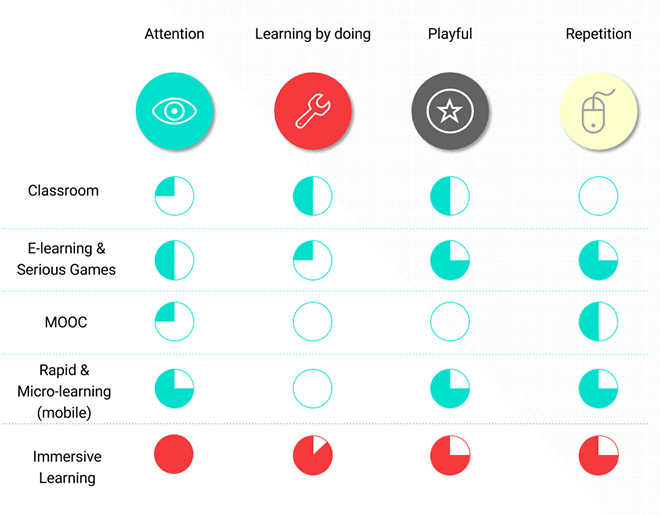Immersive outcome-based learning represents a shift from objectives to outcomes. Training
becomes more focused on the learner. In traditional training and learning models, materials are
designed by the instructor or coach at a company. They guide the curriculum and content, as
well as the learning objectives, teach the content over a set period of time, and then trainees
are assessed on what they learned as a result. It’s instructor-driven in these models.
With an outcome-based model, the goal isn’t to necessarily follow a predetermined timeline or
set curriculum but is instead to build upon the individual trainee’s preexisting skills, knowledge,
and experience.
Some of the characteristics prevalent in outcome-based learning may include hands-on
activities, interactivity, and real-world influence.
Benefits of Immersive Learning
- Experiential – The learning experiences are real and relevant, ensuring that learners apply the best course of action when similar situations arise in their work environment.
- Deliver better understanding and learning – Learning by doing and within the real context.
- Gaining a subjective view – Putting yourself in other stakeholders’ positions.
- Improves retention – Improves muscle memory.
- Supports distance learning – A richer social environment then a chat room, and ideal for collaborative remote learning.
- Changes learner dynamics – Harder for individuals to dominate the experience.
- Reduces costs – Especially travel and setup.

